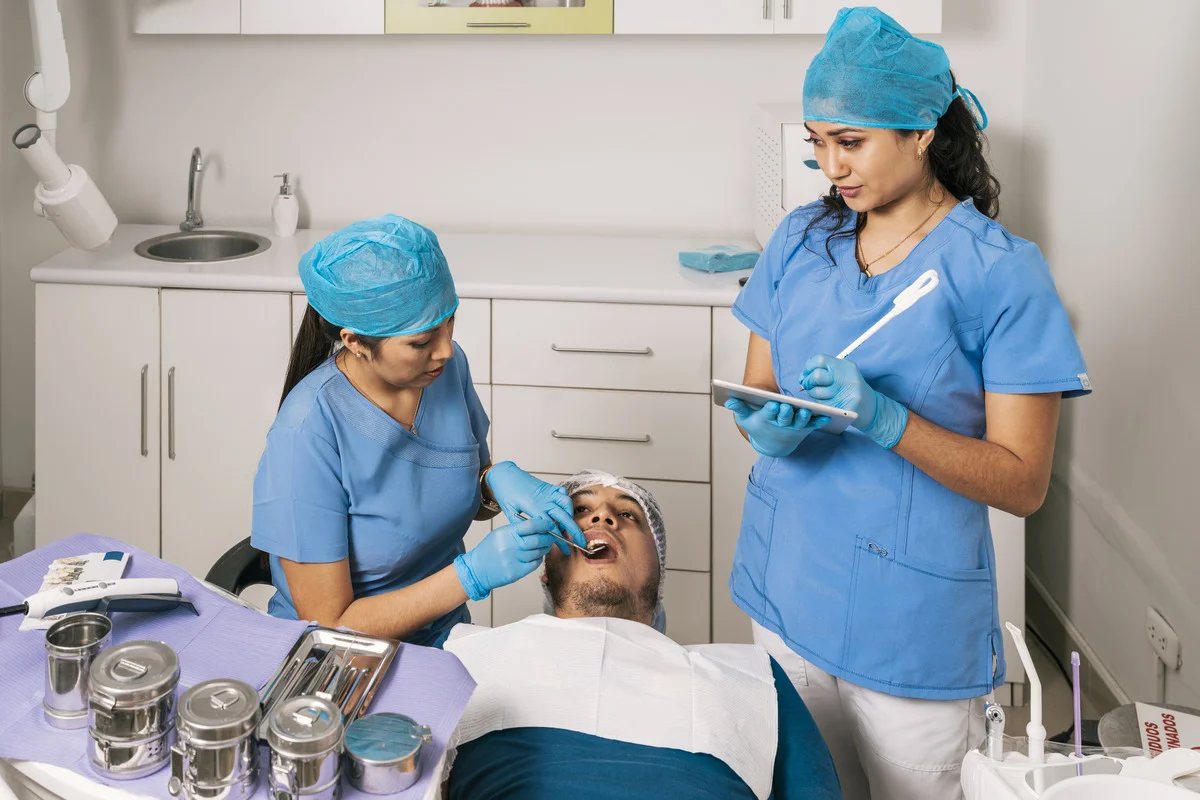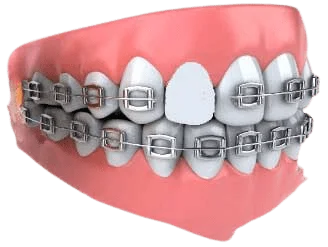Emergency Dental Service
Emergency Dental Service
Dental Emergency Service Hotline: 020 8746 1500
Our 24 Hour London Dental Emergency Service is the largest and longest-running dental emergency service in London and is designed to cater to all patients who cannot access acute dental care. Started in 1990, we were privileged to accept patients from all the major Accident and Emergency Hospitals in London. They recommended us because of our reliability and quality when it comes to delivering a world-class Dental Emergency Service.
This experience has highlighted that whether a patient has a Toothache, Abscess, Dental Swelling, Loose Crown, Fractured Teeth, Dental Trauma, Dental Accidents,Broken Denture is not an emergency and cannot do any emergency treatment on it. And Root canal treatment cannot be done on emergencies. The maximum can be done is pulp extirpation, the patient needs immediate attention and dental care so our team try to see you promptly.


What If I Need More Treatment?
The new dental contract started in 2006. Through our track record, we were offered and were proud to accept the largest NHS Dental Emergency Contract in London. In all 8 Primary Care Trusts in London use our 24 Hour Dental Emergency Service. This Dental Emergency Service can be accessed by contacting the clinic closest to where you live.
If you wish to be seen on the NHS for a dental emergency after surgery hours please contact NHS Dental Nurse Triage by telephoning 111. That service is accessible up to 1 AM and you should call by 11 PM at thelatest. Otherwise they will offer you an appointment the following day, If NHS 111 have a slot available they will book you.
Our private dental emergency Hotline is 02087461500. We can arrange for a private emergency appointment tailored for you where this pathway is what you desire.
Types of ToothAche:
This is the most common emergency and is usually related to changes in the pulp of the tooth:
However, cold or sweet that goes beyond regular tooth sensitivity, it may be pulpitis. You may notice a chinking sensation in one of your teeth or sharp pain when eating hot/very cold foods/drinks. Pulpitis happens when the inner pulp portion of the tooth, which is made up of blood vessels and nerves, becomes inflamed. This inflammation is generally reversible, but there are times when the inflammation is not reversible and the pulp can not heal itself. In either case, it’s best to visit your dentist for discussion and treatment.
Reversible pulpitis.Reversible pulpitis. Causes pain of short duration and is mild to moderate in severity and can be triggered by changes in temperature or sweet foods.
It usually does n’t cause disturbed sleep and typically requires a trigger.
This type of toothache is generally well localised and the patient is suitable to tell which tooth it is.
Early removal of the decay followed by a filling or crown keeps the tooth pulp alive.


Irreversible pulpitis.
When the condition is unrecoverable, pulpal inflammation doesn’t go away even after removing the cause. The inflammation causes the pulp structure to die.
With irreversible pulpitis, the pulp is no longer suitable to heal itself and stay alive. Your body’s immune system breaks down the dead tissue. Still, if there’s too great an infection and dead tissue for your immune system to handle, an abscess can form. The infection may spread to the surrounding bone or other areas of the body.
In extreme circumstances, hospitalisation may be needed. Pain can be very intense and painkillers are frequently not effective. You may find pain or swelling, and sometimes pain being relieved with cold water. You might lose the tooth unless a root canal treatment is performed at an early stage.
Dental Prosthetic Emergencies
Lost filling or crown: It is important to see a dentist as soon as possible if you lose a filling or a crown. You may or may not have pain or sensitivity, but the longer you leave a tooth bare, the higher the chances of you developing a problem, or exacerbating an existing problem.
The loss of a filling or crown may also have occurred as a result of underlying issues, for example, dental decay. If there is no decay, then your existing crown can normally be recemented back at the same visit. Lost fillings will usually require replacement of the filling, you may have the option of a temporary or definitive filling being placed.
Broken tooth: Teeth may break for a variety of reasons including dental decay, trauma, or biting hard or sticky foods. Treatment is dependent on how much of the tooth has broken, how much remains and whether the pulp has been damaged as a result. Most teeth can have treatment to help save them, but a thorough assessment is required.

Broken Dentures
A denture can break for a variety of reasons. We don’t recommend that you try to repair it at home It is better to avoid using a damaged denture in order to prevent damage to your lip, tongue and cheek, and to also avoid any risks of swallowing it.
DENTAL TRAUMA
Dental trauma can be caused by a variety of causes eg accidental trips, falls, sports injuries and assaults. Treatment really is dependent upon the extent, degree of trauma and the time it’s taken for the patient to access treatment after the trauma.
Knocked out and displaced teeth can normally be replanted, moved back to their original position andsplinted.However, it’s important to follow simple guidelines eg keep it clean, do not scrub or disinfect the root, If the tooth has been knocked out. The important thing is to keep the root moist as drying of the root will lead to the death of cells on the root surface. Ideally, it’s best to seek and have treatment within two hours of the incident, but sometimes this isn’t possible. As long as the tooth has been cared for, the tooth can be placed back in the socket.
After the tooth has been placed back in the socket it has to be splinted. Splinting involves bonding a piece of line onto the tooth shells to hold the teeth in place during the healing period, which may be between two to four weeks. Regular assessments are needed during this phase in order to diagnose any infections or complications that may do so that they’re dealt with appropriately and in a timely fashion.
Minor cracks/ chips can be restored by either bonding the fractured portion back to the tooth or restoring the missing part with some compound filling material. We’ll try to achieve the best aesthetic result possible in the circumstances
Intra And Extra Oral Swellings
Time is of the essence if you get a swelling in the mouth or face. Swellings can very quickly get very serious (cellulitis) and in extreme cases can be life-threatening. The most common cause is a diseased tooth that was left untreated causing an abscess. In severe cases, the patient may need to be hospitalised or prescribed antibiotics.


Wisdom Teeth And Pericoronitis
Wisdomteeth are generally the last teeth to erupt into the mouth. These normally erupt between the periods of 18-24 years. A wisdom tooth can fail to erupt properly into the mouth and can become wedged, either under the gum or as it pushes through the gum – this is referred to as an impacted wisdom tooth.
Sometimes the wisdom tooth won’t become impacted and will erupt and function normally. Both impacted andnon-impacted wisdom teeth can cause problems for people. Some of these problems can beget symptoms similar as pain and swelling, other wisdom teeth may have no symptoms at all but will still cause problems in the mouth.
What problems can wisdom teeth cause?
Common problems with wisdom teeth include :
Cyst Formation around the wisdom tooth but this is uncommon.
Bleeding After An Extraction
Bleeding will occur after an extraction and it isn’t uncommon to ooze blood for 24-48 hours after surgery. Placing a mouth pack over the area and biting forcefully for 20 minutes will often controlbleeding.
However, replace gauze as needed, If oozing is still active. This can, still, be serious and can lead to death, especially if it’s uncontrollable and after a dental extraction. Immediately seek advice or call an ambulance.
You might need suturing or pressure from special gauze placement to help stop the bleeding. Please bring a list of current medications you’re taking.

Pain After A Dental Extraction And Dry Socket
Discomfort, tenderness and swelling should be expected for about 3 days after an extraction. This normally reduces and responds well to anti-inflammatories like ibuprofen.
It is common to get pain after an extraction which subsides over time. If the pain is intense and gets worse on the around the third day after extraction, then you might have what’s called a dry socket.
Basically, the blood clot which normally fills the socket disintegrates leading to exposed bone.
Broken Braces / Wires
Commonly with braces, you can experience issues which include loose bands, loose braces, broken braces, broken wires or wires sticking out. You may need to visit a dentist if it’s causing trauma to your soft tissues eg cheeks, gums, palate or tongue.

Dental Abscess
A dental abscess is a buildup of pus that forms inside the teeth or gums. The abscess generally comes from a bacterial infection, frequently one that has accumulated in the nerve of the tooth when the nerve has failed.
Bacteria live in plaque, a by-product of food, saliva, and bacteria in the mouth, which sticks to the teeth and damages them and the gums. Still, the bacteria may spread inside the soft tissue of the tooth or gums.
If the plaque isn’t removed by regular and proper brushing and flossing, this can ultimately cause an abscess. There are three types of dental abscess Gingival, periodontal or periapical. Symptoms of dental abscesses include pain, a bad taste in the mouth and fever. Treatment for an abscess may involve root canal surgery. To minimize pain, it is best to avoid cold drinks and food and use a softer toothbrush until recovery has been achieved.


Symptoms:
Signs and symptoms of a dental abscess include:
Pain in the affected area when biting or when touching the affected area, sensitivity to cold or hot food and liquids, a bad taste in the mouth, a high temperature.
Generally feeling unwell.
Difficulties opening the mouth, eating or sleeping.
The main symptom of a dental abscess is pain. This may be a throbbing pain, radiating and is often intense. The pain can start suddenly and becomes more intense over the following hours or days. In some cases, the pain may radiate to the ear, jawbone and neck.
Any person with symptoms linked to a dental abscess should seek immediate advice and treatment.
There Are Three Types of Dental Abscess:
Gingival abscess
( gum abscess )
Periodontal abscess
This abscess starts in the supporting bone tissue structures of the teeth.
Periapical abscess
This abscess commences in the soft pulp of the tooth and then develops around the tip of the root.
Treatment
This can include advice, cold compress, cleaning, incision, draining, antibiotics, root canal treatment or extraction of the tooth.
Dental Sports Injury
Sports injuries can range from minor chips of a tooth to severe cases where teeth have been knocked out, loosened or displaced.
It is important with any dental trauma to arrange an assessment as soon as possible, especially if you have disrupted the position of the tooth or knocked it out. The success of the treatment is closely linked to how soon the treatment is sought
So, if are wondering “how do I find an emergency dentist near me “…. all you need to do is call 020 8746 1500 or visit NHS choices.
How To Get To The Emergency Dentist By Bus
From: Heathrow Airport Terminals 1-3 To: Ghauri Dental Centre, 113 Vicarage Farm Road, Hounslow TW5 0AA, UK
- Piccadilly line to Hounslow West – Journey time: 6 mins
- Get off at Hounslow West Station / Vicarage Farm Road
- Walk to H32 bus or 482 bus to Great West Road – Journey time: 5 mins
- Get off at 54 Vicarage Farm Road, Hounslow – Journey time: 3 mins
- Walk to 113 Vicarage Farm Road, Hounslow Journey time: 1 min
- Reach at 113 Vicarage Farm Road, Hounslow
From: Southall, Southall Station To: Ghauri Dental Centre, 113 Vicarage Farm Road, Hounslow TW5 0AA, UK
- 482 bus or H32 bus to Great West Road – Heston House – Journey time: 21 mins
- Get off at 54 Vicarage Farm Road, Hounslow
- Walk to 113 Vicarage Farm Road, Hounslow – Journey time: 3 mins
- Reach at 113 Vicarage Farm Road, Hounslow
From: Westfield Shopping Centre, Shepherds Bush To: Ghauri Dental Centre, 1-3 Wormholt Road, Shepherds Bush, London W12 0LU, UK
- 72 bus or 220 bus or 272 bus to Shepherd’s Bush (Central Line) – Journey time: 12 mins
- Get Off at Shepherd’s Bush Green
- 207 bus or 260 bus to Galloway Road – Journey time: 14 mins
- So Get Off at Shepherd’s Bush Market Station
- Walk to 3 Wormholt Road, Shepherds Bush Journey time: 3 min
- Reach at 3 Wormholt Road, Shepherds Bush
From: Westfield Shopping Centre, Shepherds Bush To: Ghauri Dental Centre, 247 Westbourne Grove, London W11 2SE, UK
- 220 bus or 72 bus or 272 bus to Shepherd’s Bush (Central Line) Journey time: 12 mins
- Get off at Shepherd’s Bush Green
- Walk to 247 Westbourne Grove, Kensington (London) Journey time: 30 mins
- Reach at 247 Westbourne Grove, Kensington (London)
From: Hammersmith Station, London, UK To: Ghauri Dental Centre, 1-3 Wormholt Road, Shepherds Bush, London W12 0LU, UK
- Walk to Hammersmith Library Journey time: 2 mins
- 283 bus to Galloway Road Journey time: 20 mins
- Get off at Adelaide Grove
- Walk to 3 Wormholt Road, Shepherds Bush Journey time: 3 mins
- Reach at 3 Wormholt Road, Shepherds Bush
From: Bayswater Underground Station To: Ghauri Dental Centre, 247 Westbourne Grove, London W11 2SE, UK
- 70 bus to Portobello Road Journey time: 18 mins
- So Get off at Powis Gardens stop
- Walk to 247 Westbourne Grove, Notting Hill Journey time: 8 mins
- So Reach at 247 Westbourne Grove, Notting Hill
